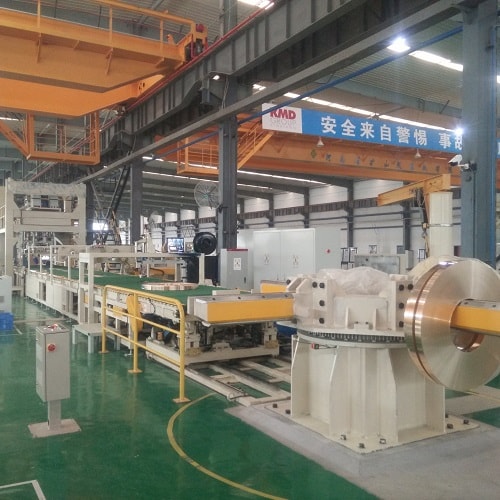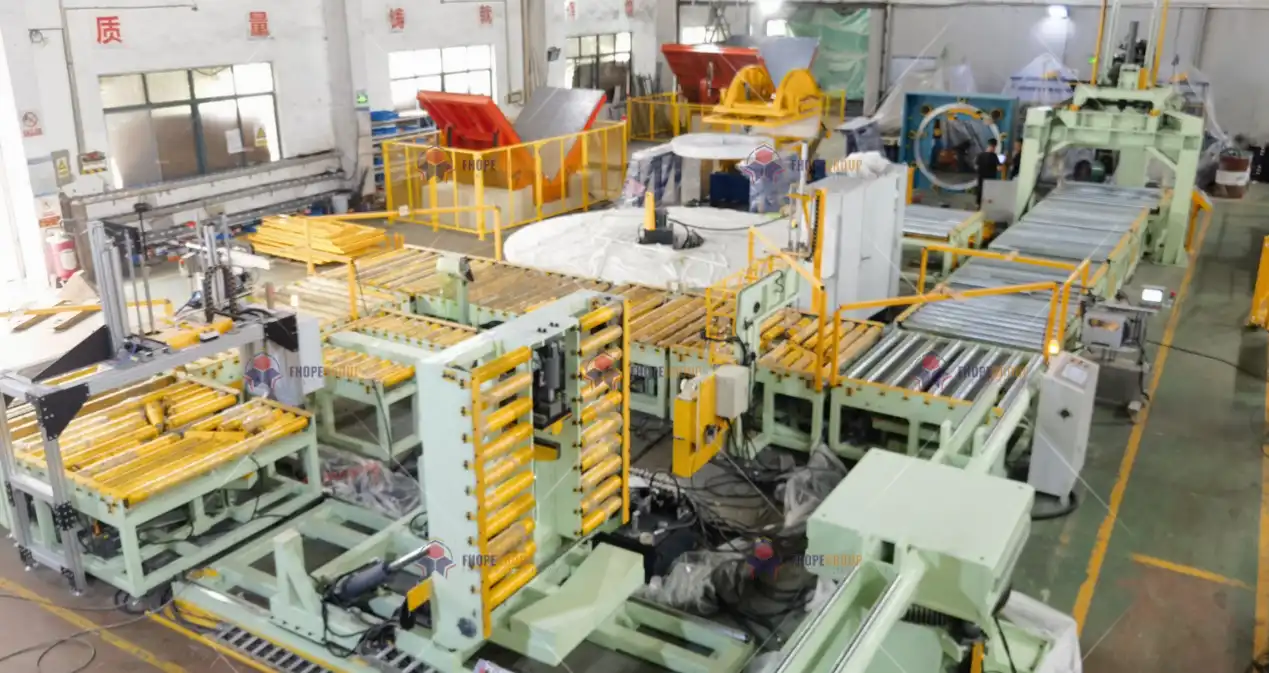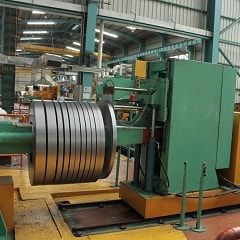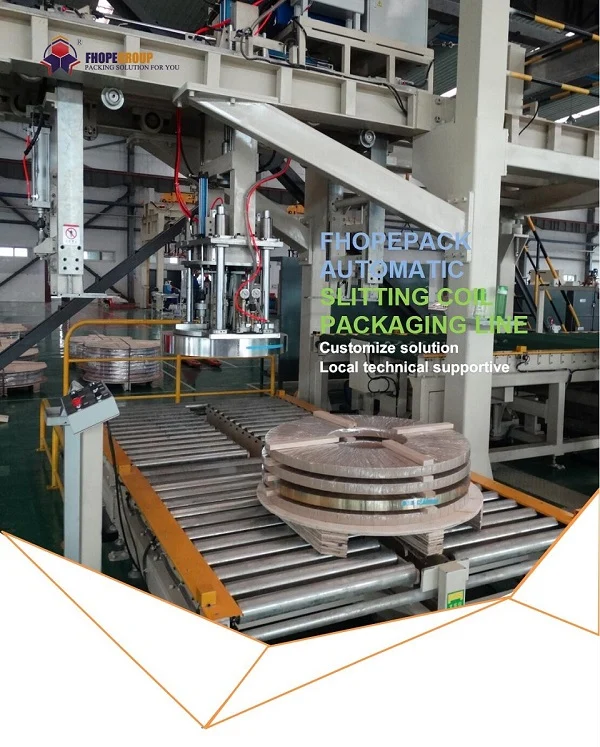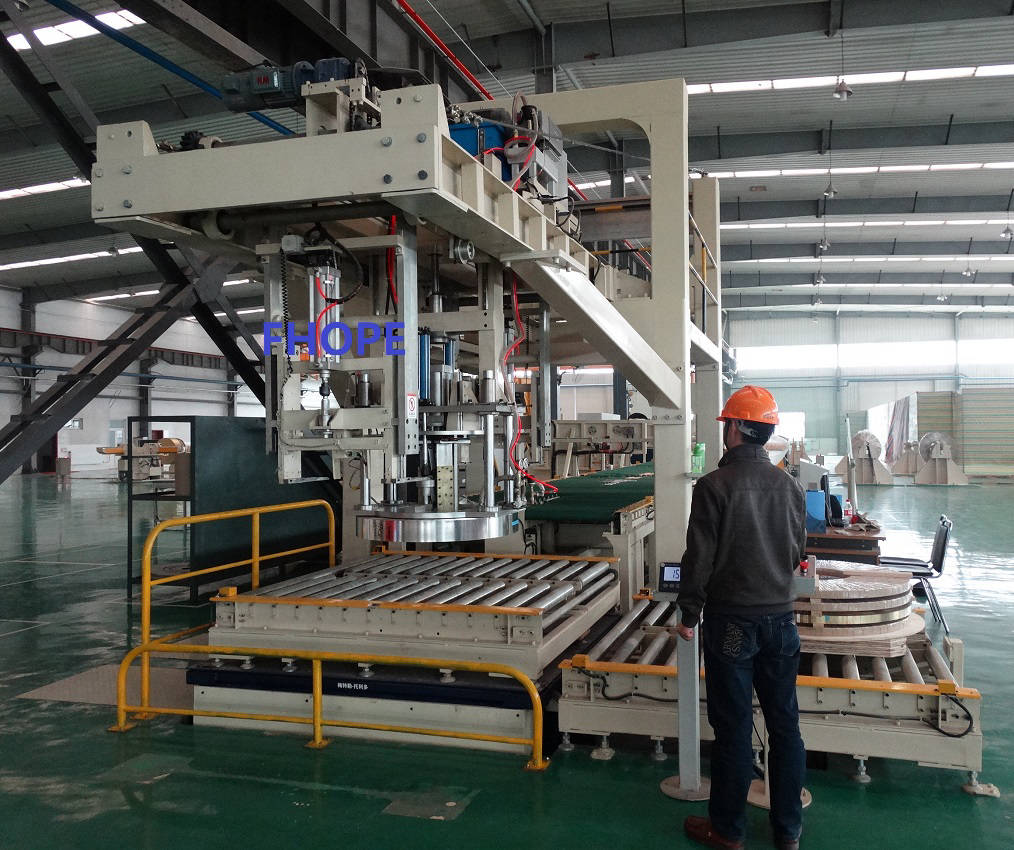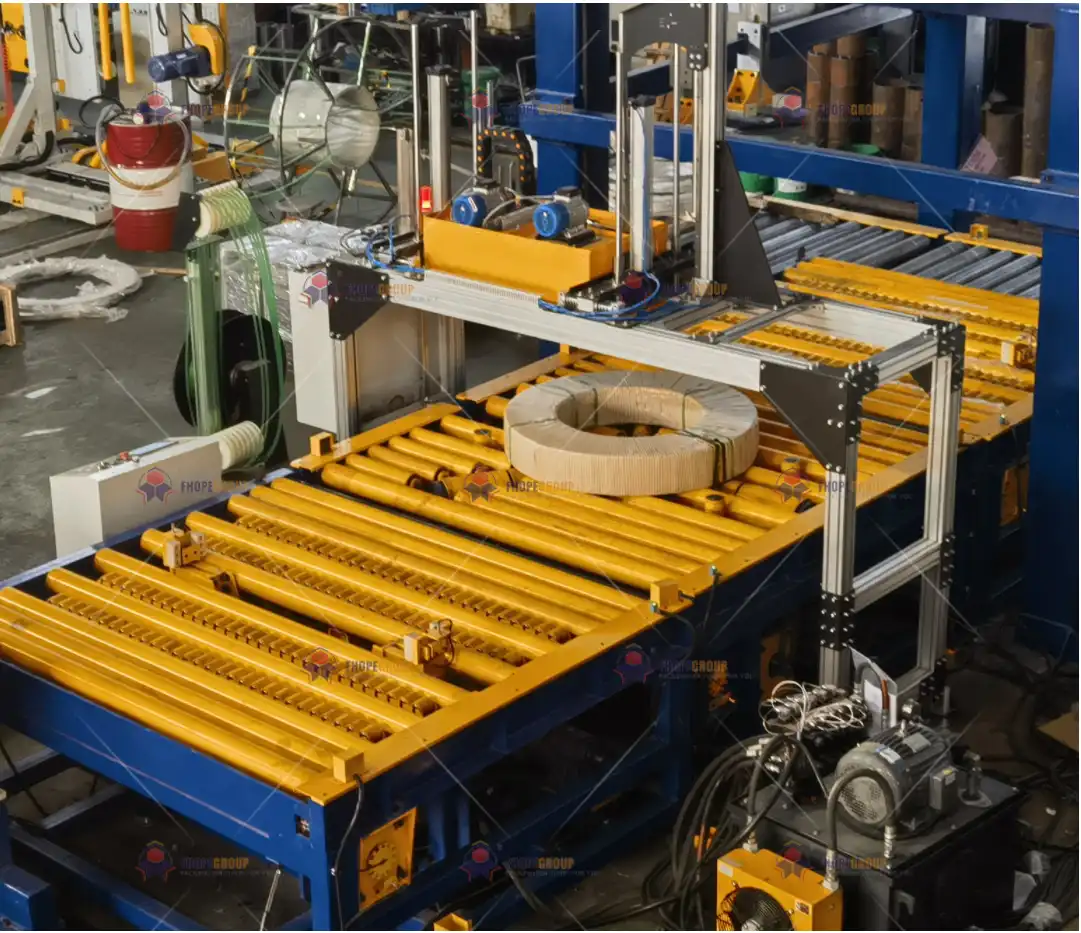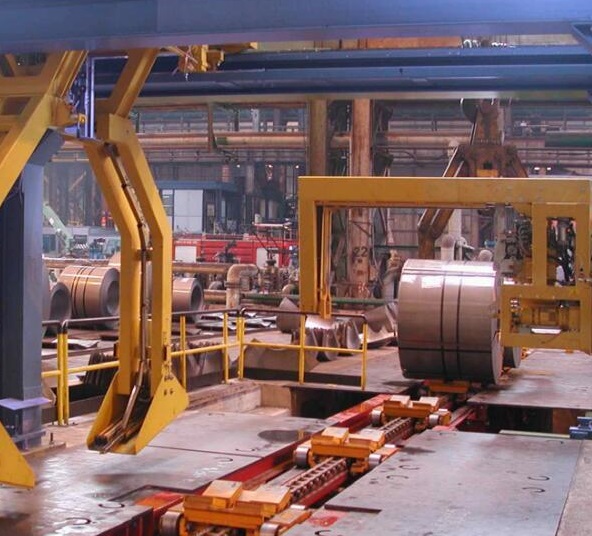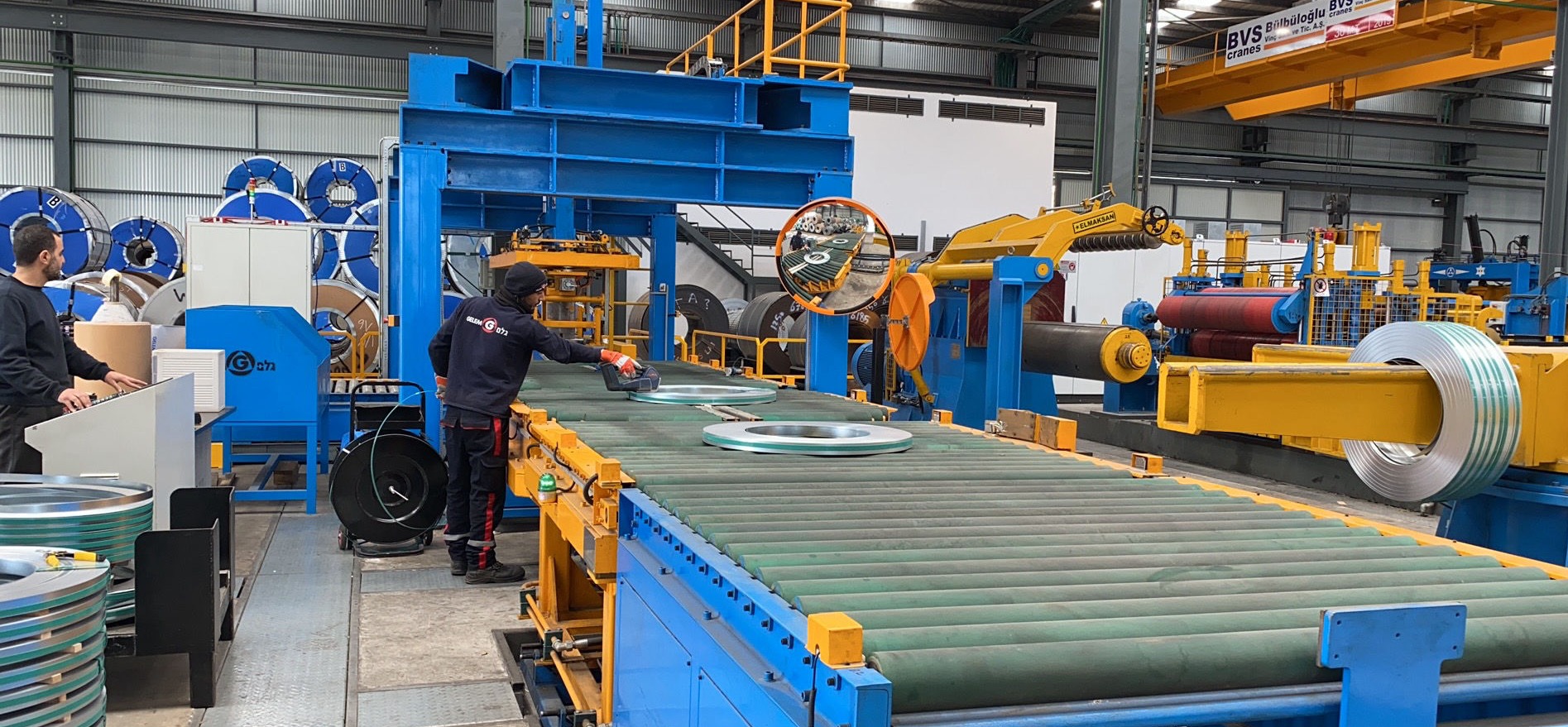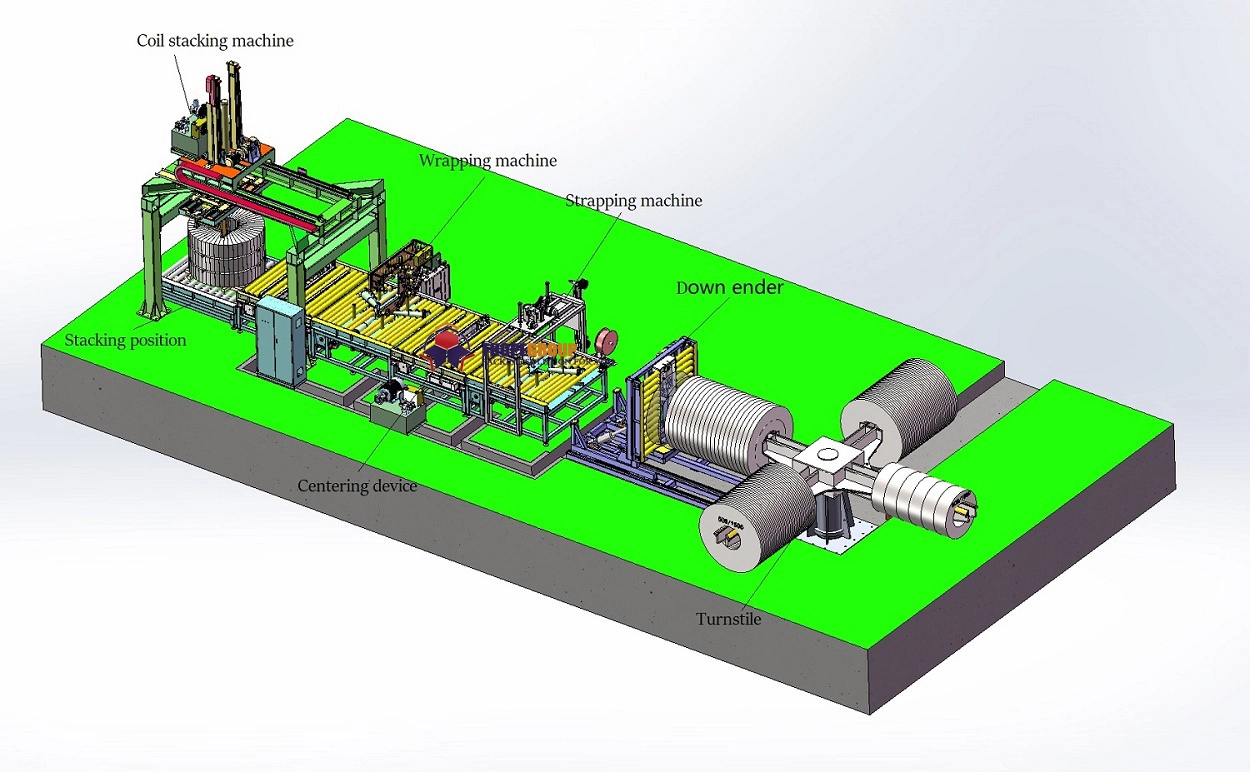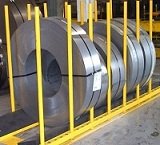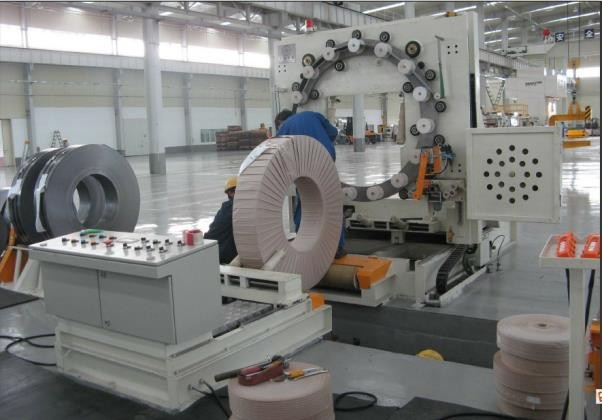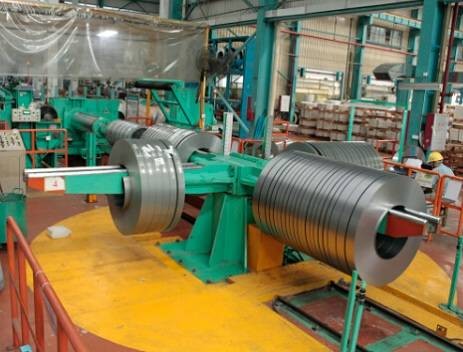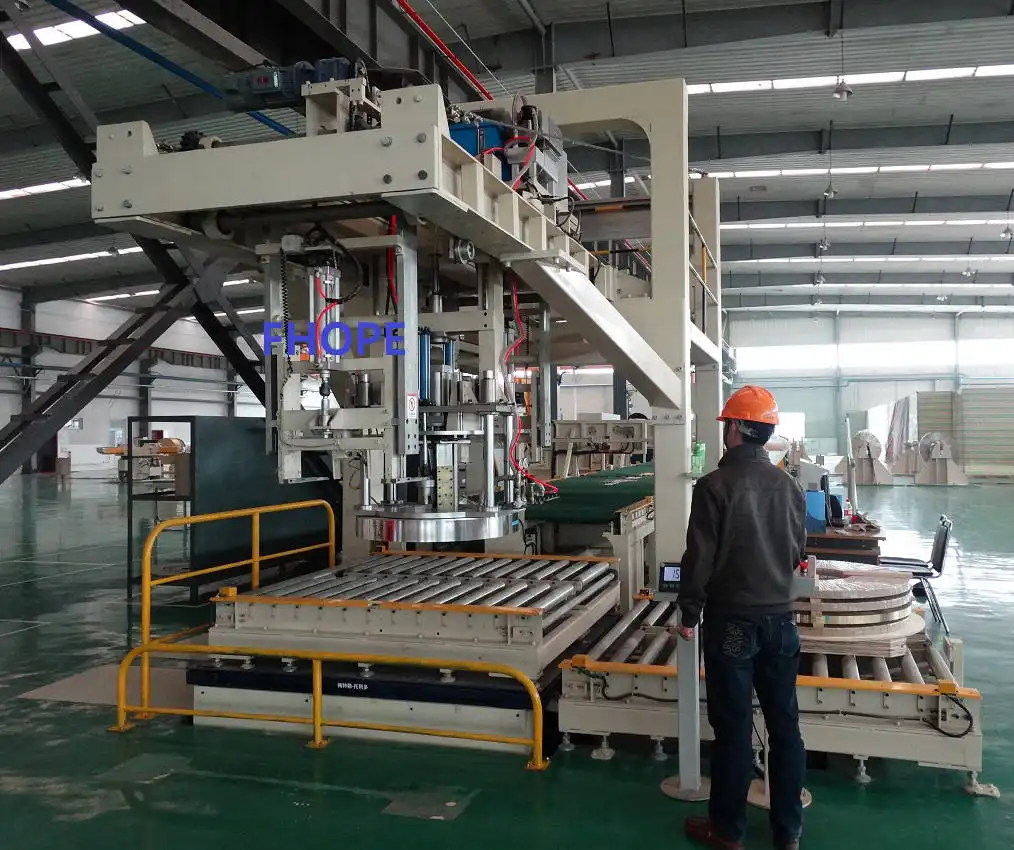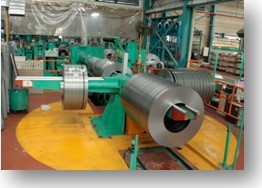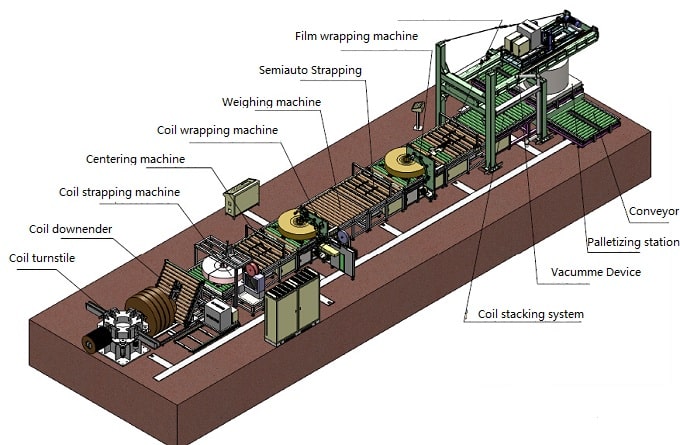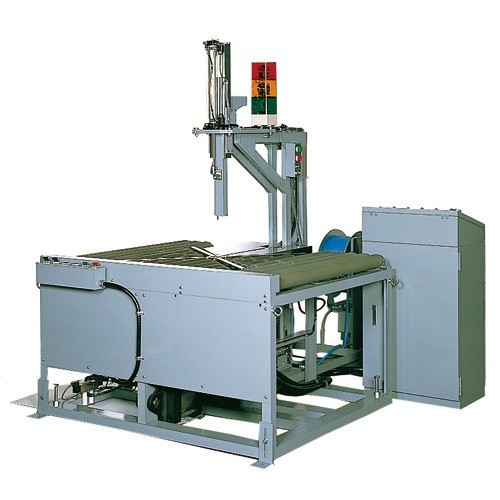In
the realm of packaging systems, particularly when dealing with slit
coil packing systems, the concept of technical efficiency is pivotal for
operational excellence. Technical efficiency represents the capability
of a machine to perform optimally under ideal conditions, where external
variables are held constant. This metric is particularly important as
it provides a baseline of how effectively the packaging equipment can
operate without interruptions caused directly by the machinery.
To compute technical efficiency, follow the formula and components described below:
Technical Efficiency (TE) in Percentage (%):
TE=(TP+TS+TRTP)×100
Where:
-
TE: Technical Efficiency
-
TP: Net Production Time
-
TS: Machine Stop Time
-
TR: Machine Restart Time
This formula helps determine the efficiency by comparing the actual
production time to the total time including stops and restarts.
Technical efficiency is most commonly expressed as a percentage. For
example, in a standard 8-hour production shift, high-performance
packaging machines such as form-fill-seal (FFS) and fill-seal (FS) types
are expected to achieve a technical efficiency of around 95%. This
indicates that the machine is running at its full capacity for 95% of
the operational time, with only a 5% downtime due to machine-related
issues. This high level of efficiency is crucial in maintaining
consistent production outputs and meeting the stringent demands of
packaging operations.
When evaluating technical efficiency, it's crucial to understand what is excluded from this calculation. Technical efficiency focuses solely on the machine's performance, devoid of any external disruptions. Here's an expanded look at the factors not accounted for:
-
1. Changeovers in Packaging Materials and Products:Switching between different packaging materials or products can cause significant downtime, a factor not considered in technical efficiency. This downtime primarily arises because each changeover can involve recalibrating equipment, adjusting machine settings, or even replacing parts to accommodate new material specifications. During this period, the machine is not producing, which impacts overall output but is not reflected in technical efficiency metrics. The crane handling time, especially for moving and turning, further exacerbates this downtime as it requires careful maneuvering to avoid damage, which is another aspect not captured in technical efficiency calculations.
-
Operator Errors: Mistakes made by operators or improper machine operation that lead to stoppages are also excluded from this measure.Operator errors are an inevitable part of manual operations but are not included in technical efficiency assessments. Mistakes can range from incorrect machine setup, misfeeding materials, to improper maintenance routines, all of which can lead to machine stoppages or reduced performance. These human errors can significantly affect productivity and output quality, yet technical efficiency calculations typically assume optimal operation conditions, thereby excluding these real-world variances.
-
Quality of Packaging Materials: The use of
poor-quality materials that might cause machine jams or other issues is
another factor not included in the technical efficiency metric.The quality of packaging materials is a critical factor that can affect machine performance, yet it is not included in technical efficiency metrics. Poor-quality materials may lead to frequent jams or require the machine to operate at lower speeds to prevent damage, thus reducing throughput. These issues can cause inefficiencies that are not captured when calculating technical efficiency, as the metric assumes high-quality inputs that do not impede machine operations.
-
Utility Failures: Interruptions in essential
services like power, air, water, or vacuum supplies that affect machine
operation are not considered in the technical efficiency calculation.Utility failures, such as interruptions in power, air, water, or vacuum supplies, can bring operations to a halt but are not considered in technical efficiency calculations. These services are vital for the proper functioning of machinery, and any disruption can lead to downtime that affects overall production. Since technical efficiency focuses purely on the machine's operational performance, it does not account for external utility disruptions, leading to a potentially skewed understanding of a machine's efficiency.
-
External Influences: Issues in the upstream or downstream processes that impact the packaging line are outside the scope of this calculation.External influences, including issues in upstream or downstream processes, can impact the packaging line but lie outside the scope of technical efficiency calculations. For instance, delays in the supply chain or bottlenecks in subsequent processing stages can affect the machine's throughput and operational flow. Technical efficiency metrics focus solely on the machinery's performance under ideal conditions, thus excluding these systemic factors that can influence overall productivity.
Understanding these exclusions is critical for manufacturers as it
helps identify areas outside of direct machine control that can affect
overall line efficiency. By focusing on improving not just the technical
efficiency but also addressing these external factors, businesses can
significantly enhance the overall productivity and reliability of their
slit coil packing systems. This holistic approach to managing both
machine efficiency and external influences ensures smoother operations
and fewer disruptions in production.
An automated coil packaging system revolutionizes the handling process of slit coils for storage and transportation by efficiently wrapping, weighing, strapping, and stacking them. This advanced system offers a comprehensive solution to streamline operations and ensure the safe and organized handling of slit coils.
The automated coil packaging system ensures consistent and uniform coverage, eliminating the variability and potential for human error associated with manual packaging. It also reduces the physical strain on operators, improving workplace safety. Additionally, the system can be integrated with coil identification and tracking systems to maintain full traceability of the packaging process. This end-to-end automation improves efficiency, product integrity, and supply chain visibility for cold rolled narrow strip producers.
WHY CHOOSE FHOPE FOR COIL PACKING SYSTEM
-
Safety: FHOPE packing line prioritize user safety with built-in CE protective features..
-
Uptime: Our packing line solutions adapt to any load and speed, ensuring continuous, jam-free operation..
-
Easy to use: user-friendly, requiring minimal training and maintenance, and consistently delivers quality and efficiency.
-
Performance: leads the industry with 15+ years of innovative, updateing technology for coil packing.
-
24/7 support:unparalleled 24/7 support and service, best-in-class warranty.
-
Automation: Programing and system connection from Level 1, level 2, level 3.
Specifications For Slit Coil Packing System:
-
Widths ranging from as narrow as 20mm to as wide as 1500mm, and thicknesses ranging from 0.2mm to 6mm, maximum coil diameter can range from 1000mm to 2000mm.,
-
Wrapping speed ranges from 15 to 40 coils per hour. The speed can be adjustable to suit the production requirements and ensure optimal wrapping quality.
-
The conveying speed can vary based on the system's configuration and size, ranging from 5 to 20 meters per minute.
-
The working table height can range from 800mm to 1200mm, allowing operators to easily access and handle the coils during the packaging process.
-
The system is typically designed to meet regional electrical standards and can be configured for different voltage options, such as 220V or 380V or 440V AC.
